ONLINE SCHOOL PROGRAMS
CMLC online tours are offered Tuesdays 8:30am-5:00pm and Wednesdays-Fridays 8:30am-11:00am. Squid dissection is available Tuesdays-Fridays 8:30am-5:00pm. We offer guided educational programs geared to NGSS standards.
- Available via zoom
- Maximum of 30 students
- Flat fee of $80

Online: Tour of Live Animal Exhibits
preK - 12th Grade
Join us for a remote visit to the CMLC. This engaging experience provides students with an opportunity to delve deeper into our living exhibits. They will get close-up looks at our animals, ask questions, and participate live while learning about the marine diversity along the Oregon coast. These virtual field trips are adapted to meet Next Generation Science Standards and are tailored to your students’ grade level.
Duration: 60 minutes
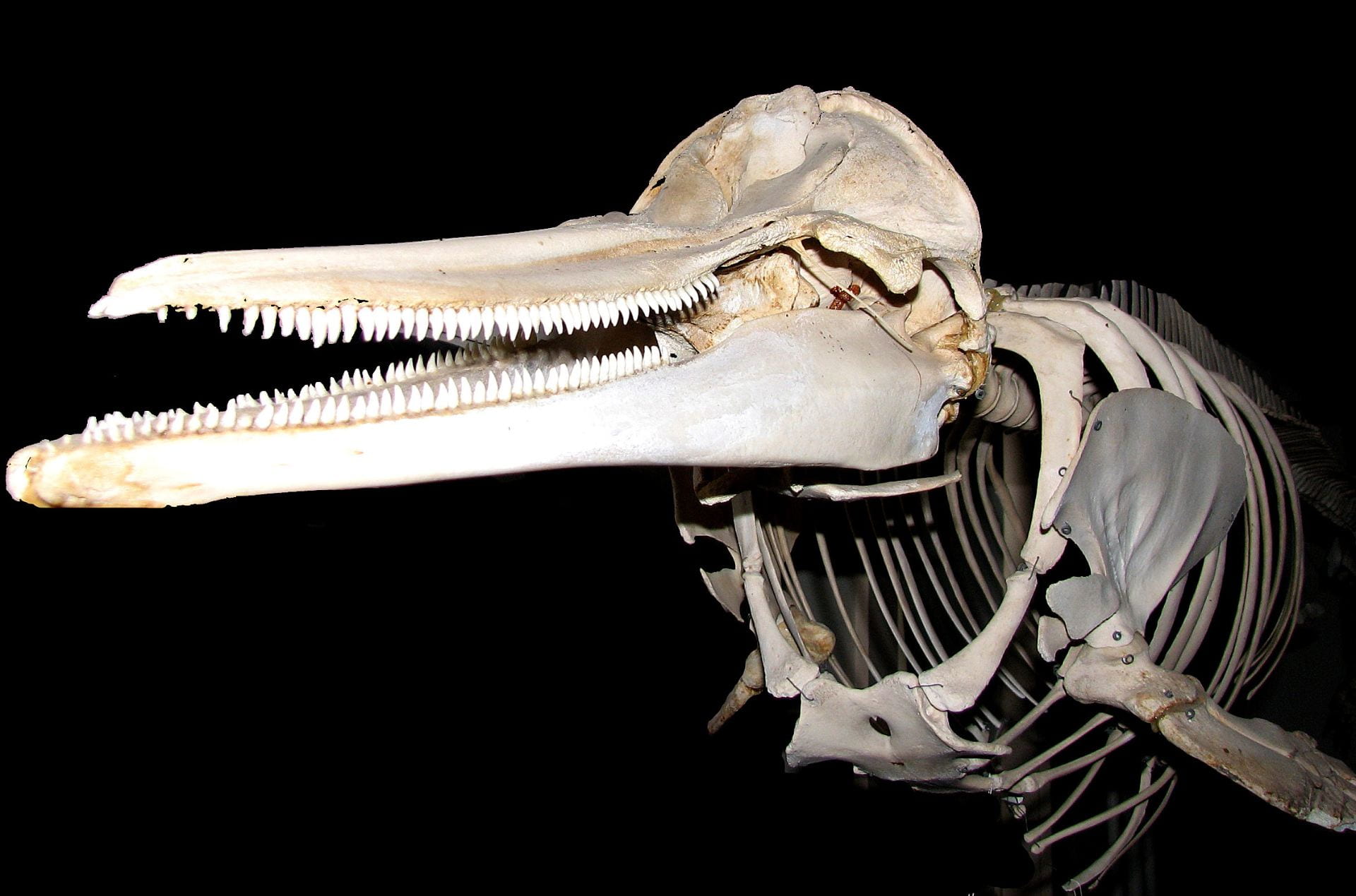
Online: Tour of Marine Mammal Skeletons
6th - 12th Grade
Join us for a virtual exploration of our marine mammal skeletons. Students look closely at a variety of cetacean skeletons, including orca, gray and sperm whales, as well as dolphins and porpoises, seals, sea lions and sea otters. After an introduction to the secrets that bone structures reveal, students are challenged to generate their own hypotheses of marine mammal locomotion and feeding.
Duration: 60 minutes
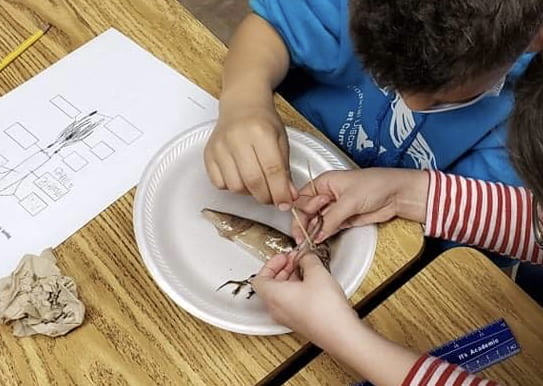
Online: Squid Dissection
4th - 7th Grade
This hybrid experience combines hands-on learning for your students with virtual instruction. Throughout this program, students will participate in a guided squid dissection while learning more about the internal and external anatomy of these jet-propelled cephalopods. Concepts and learning objectives are designed to meet Next Generation Science Standards and we are happy to communicate with you in advance about the program setup.
Duration: 60 minutes
- Classes provide own materials
- Squid (recommended one per pair of students, available at bait shops)
- Paper plates and paper towels
- Toothpicks
- Scissors
- Small rulers
ON-SITE SCHOOL PROGRAMS
CMLC class or camp tours and programs are offered Tuesdays 8:30am-5:00pm and Wednesdays-Fridays 8:30am-11:00am. We offer guided educational programs geared to NGSS standards.
- Maximum of 30 students
- $4 per student, minimum fee of $80 (note the on-site marine mammal program is a double program, $8 per student, minimum fee of $160)
- Teacher and first 5 chaperones are free, additional chaperones are $8 adult/$6 senior (62 and above)
- Please have 1 chaperone for every 6 students (preK-6th grade) or every 12 students (7th – 12th grade)
- Contact us regarding special needs
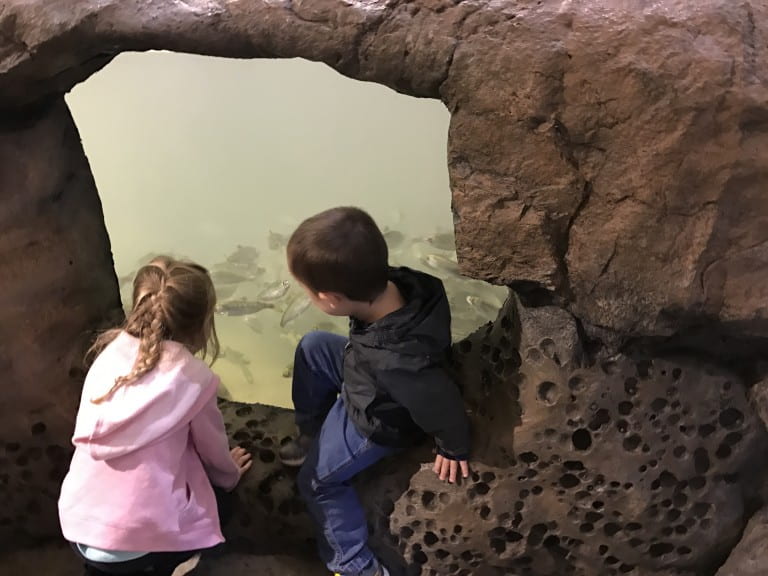
On-site: Class or Camp Tours
preK - 12th Grade
Bring your students for a guided tour of the CMLC. Tours are offered on Tuesdays between the hours of 8:30am-5pm and Wednesdays-Fridays 8:30-11:00am.
Duration: 60 minutes
- Maximum of 30 students
- Tour includes both floors of the CMLC — the live animals and exhibits.

On-site: Living in Tidepools - Adaptations
K - 2nd Grade
Tidepools are challenging places to live. As tides come and go, these areas along rocky shores are sometimes exposed to waves, hot sun, rain, and different predators. In this lesson, students learn about common local tidepool animals, challenges they face, and adaptations they have to survive at low tide. The program combines problem-solving, observation of animals, and exploration of the center’s aquaria.
Duration: Program lasts 60 minutes including time to explore.
Concepts covered:
Animal Diversity
Adaptation
Intertidal
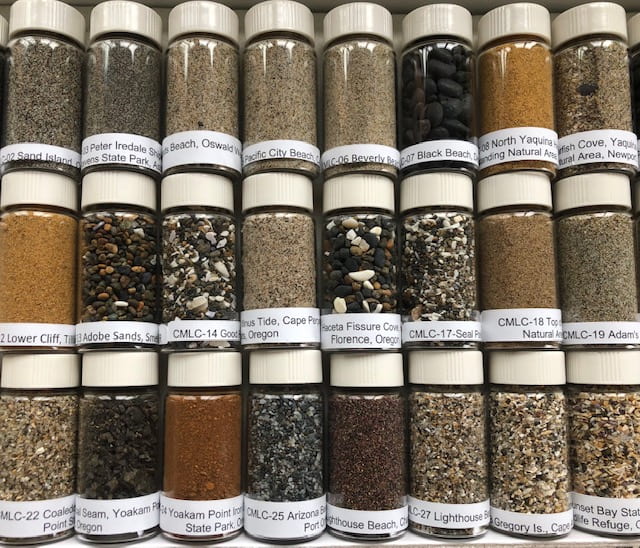
The Stories of Sand
2nd - 3rd Grade
The sand on a beach tells a story. In this lesson, students will learn how to “read” a beach by looking at its sand. They will examine sand to determine what different grains are made of (rock, shell, wood, etc.) and learn how sand gets to beaches. As sand detectives, they will examine grain size and shape for hints, and learn about erosion and wave energy. Students will examine a variety of sands, both local and distant; make and label sand cards to take with them; and learn how sand itself becomes a habitat for animals we can see and microscopic animals that live between sand grains.
Duration: Program lasts 60 minutes; add an additional 30 minutes if you want students to have time to explore the rest of the CMLC.
Concepts covered:
Sand Formation
Erosion
Properties of Materials
Sand as Habitat
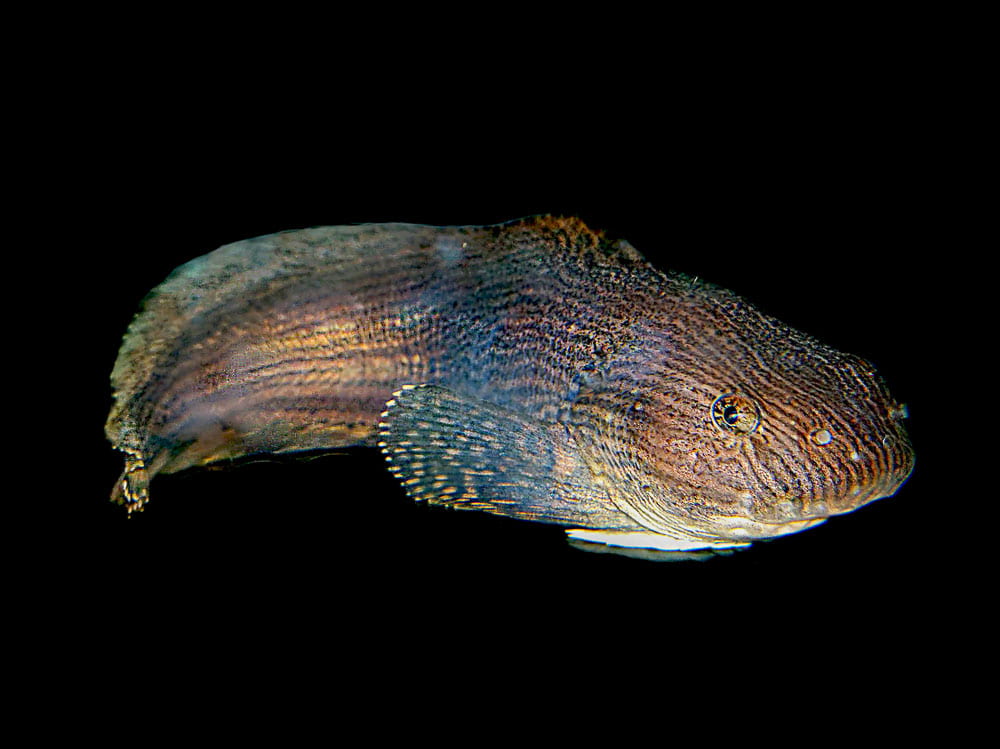
On-site: Fish - What Their Morphology and Coloration Tell Us
3rd - 5th Grade
The shape of fish, including tail shape, mouth orientation, and tooth type, give clues about the way fish live. The body shape of a fish provides hints of where they spend their time and how they move. Tail shape influences swimming speed and maneuverability. Tooth type and mouth orientation indicate the type of prey they eat and where they find their prey. Coloration also provides clues to a fish’s lifestyle. Morphology and coloration are both influenced by selective pressures. Students will learn how traits are adaptations for different situations and survival strategies, and then examine the center’s fish to identify these traits and adaptations.
Duration: Program lasts 75 minutes; add an additional 20 minutes if you want students to have time to explore the rest of the CMLC.
Concepts covered:
Fish Diversity
Morphology
Form and function
Adaptation and selective pressures
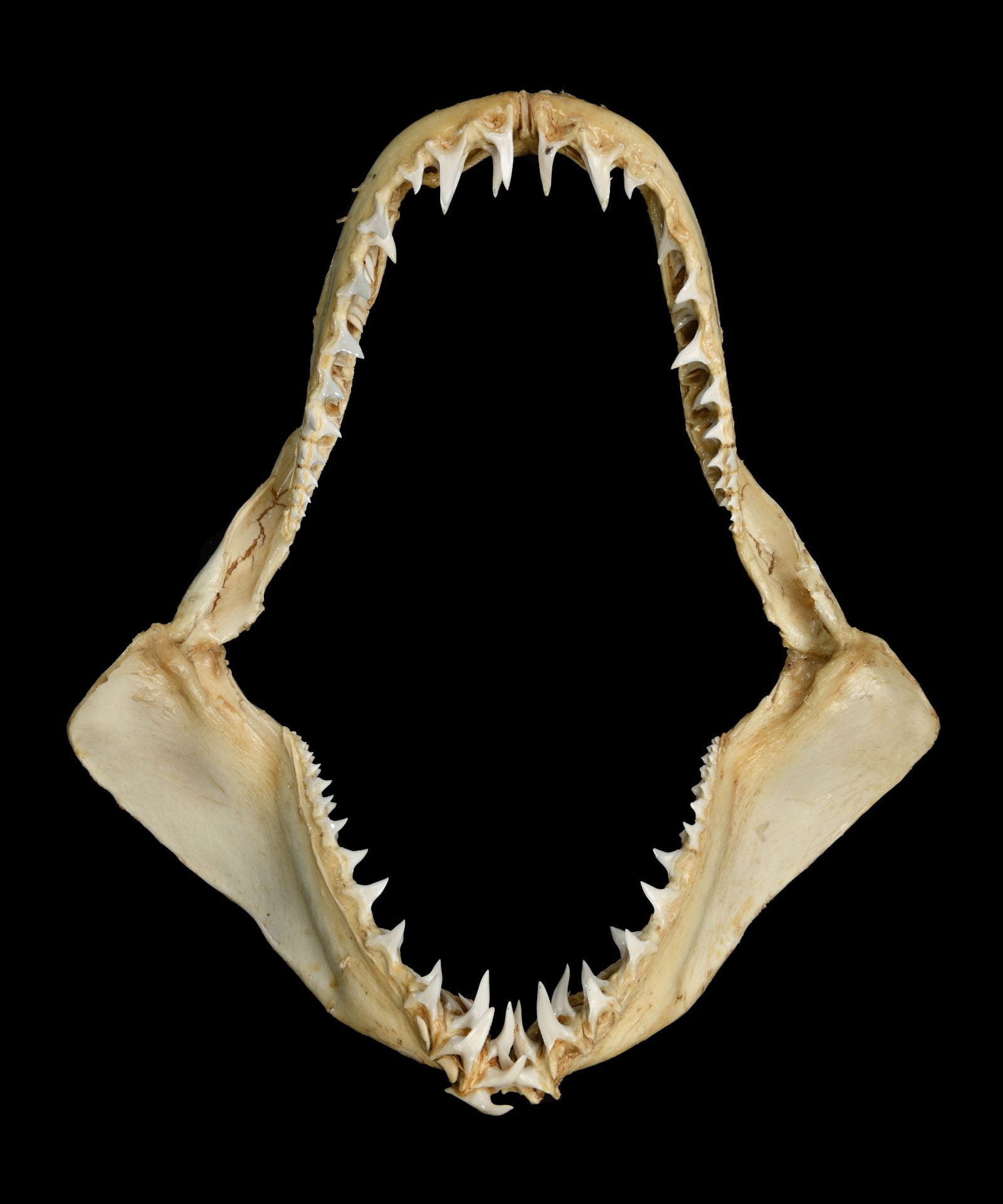
On-site: Sharks of the Oregon Coast - Designed to Survive
4th - 6th Grade
This program introduces students to the variety of sharks found off Oregon and to the adaptations that make sharks successful in their various environments. Sharks come in a range of sizes and shapes, eat a variety of prey, and are found in just about every ocean habitat. At least 16 species are found off the Oregon coast. Students will handle and examine shark jaws and fossilized teeth, and learn about Oregon’s sharks and how shark sensory systems and physical adaptations have allowed them to roam the ocean for more than 400 million years.
Duration: Program lasts 60 minutes; add an additional 30 minutes if you want students to have time to explore the rest of the CMLC.
Concepts covered:
Shark Diversity
Adaptation
Sensory Systems
Ecosystem Health
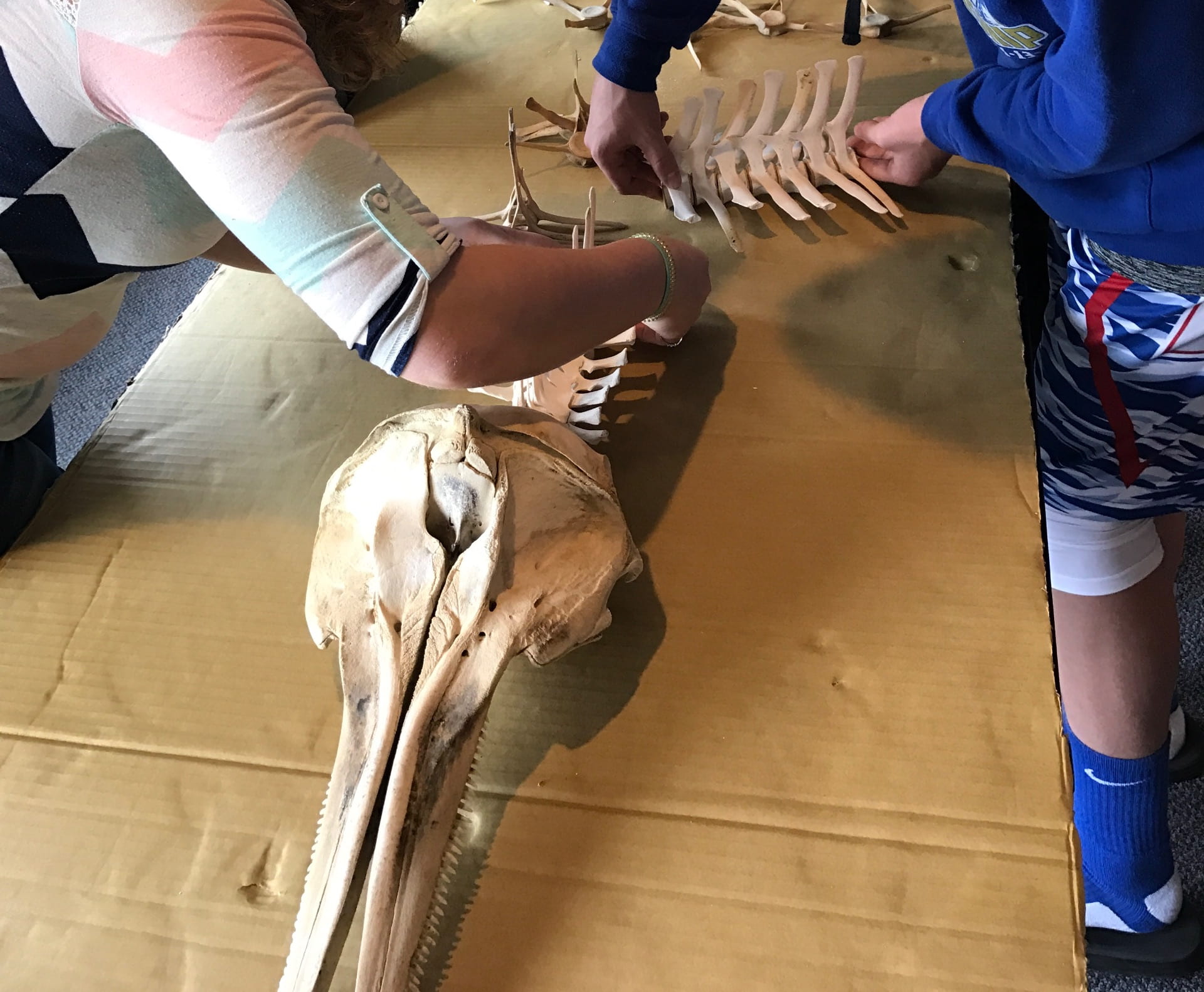
On-site: Marine Mammals in Motion
7th - 12th Grade
The skeletal structure of marine mammals is very different than that of terrestrial mammals due to the nature of the medium they move through (water rather than air). In this program students investigate and compare the skeletons of whales and dolphins to develop hypotheses as to how skeletal anatomy relates to swimming, diving, and feeding capabilities. Based on the observations and knowledge gained from these comparisons, students put together the skeleton of a “mystery” cetacean and identify its method of moving and feeding. The program emphasizes the diversity of ways whales and dolphins move and feed in the water.
Duration: Program lasts 120 minutes. We recommend you plan for 2 1/2 hours so students can also look around the CMLC.
Concepts covered:
Cetacean diversity
The mechanics of motion
Anatomical form & function
Developing hypotheses from observations
SELF-GUIDED CLASS VISIT
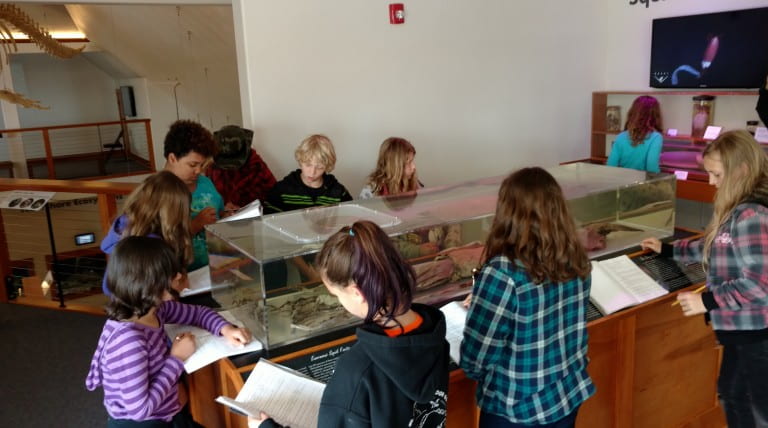
On-site: Self-Guided Class or Camp Visit
preK - 12th Grade
- Available Tuesdays 8:30am-5pm and Wednesdays-Fridays 8:30-11:00 am
- Self-guided by group’s teachers or counselors, not by CMLC staff
- Please note this is not unstructured time but an opportunity for teachers and counselors to run their own programs. If you don’t have your own program, please register for a guided tour.
- Please have 1 chaperone for every 6 students (preK-6th grade) or every 12 students (7th – 12th grade)
- Maximum of 40 students
- Contact us regarding special needs
- Flat fee of $50 per hour or part of hour

